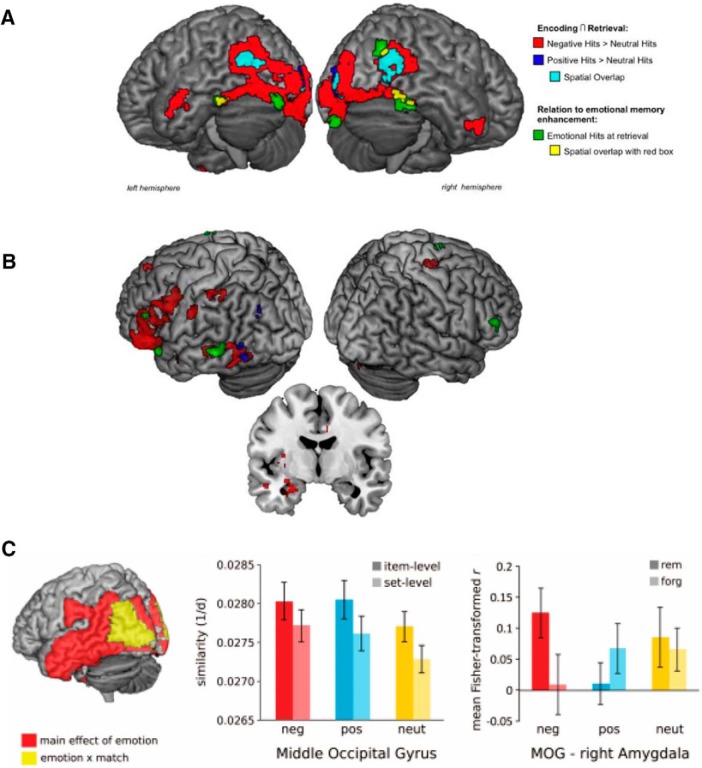Figure 1.
Empirical evidence of emotion-enhanced sensory cortex and amygdala recapitulation during memory retrieval. A, Conjunction fMRI analyses of brain activity associated with successful memory during encoding and retrieval revealed significant spatial overlap (i.e., recapitulation) in ventral temporo-occipital cortex for negative and positive emotional images (red, blue and turquoise clusters). The spatial extent of recapitulation across the visual stream was greater for negative (red clusters) than positive emotional stimuli (blue clusters). Areas associated with emotion-related recapitulation were also correlated with emotional enhancements (not differentiated by valence) in behavior (data and figure from Kark and Kensinger, 2015). B, Extending these findings, one recent fMRI study using encoding-retrieval conjunction analyses revealed greater extent of recollection-specific activity (i.e., “remember hits” vs “know hits”) across PFC, temporal cortex, and occipital cortex for negative images (red clusters). Similar neural recapitulation patterns were observed for positive (blue clusters) and neutral stimuli (green clusters) in ventral occipito-temporal cortex, but to a quantitatively lesser extent than negative stimuli. Recollection of negative valence stimuli was also associated with enhanced recapitulation activity in the amygdala. Because neutral word cues were used to cue “remember” or “know” memory decisions, these neural patterns are interpreted as evidence of the recapitulation of the perceptual content of emotional memories (data and figure from Bowen and Kensinger, 2017). C, In a separate fMRI study, Ritchey et al. (2013) used pattern similarity analyses to examine correspondence between item- versus set-level activation patterns during encoding and retrieval of positive, negative, and neutral stimuli. The results revealed similar patterns of memory-related recapitulation in middle occipital gyrus for positive (blue bars) and negative (red bars) versus neutral stimuli (yellow bars) for item-specific representations. Further, the degree of encoding-retrieval similarity in middle occipital gyrus was positively correlated with retrieval-related activity in the amygdala, but only for negative valence stimuli (data and figure from Ritchey et al., 2013).

